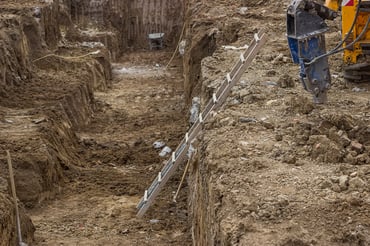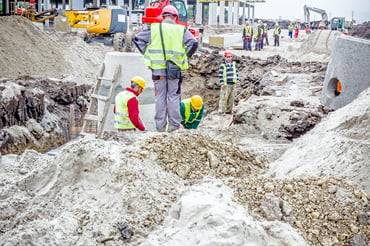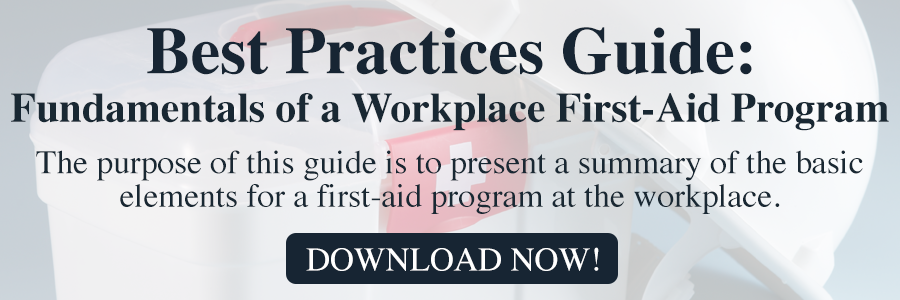Stuck in the Trenches: Safety in Winter Emergency Trench Work
- Home
- Team EJP Blog
- Stuck in the Trenches: Safety in Winter Emergency Trench Work
- Dec 13, 2016 9:00:39 AM
- Everett J. Prescott
In our industry, trench safety is both the most dangerous part of our job and the most often cited OSHA violation. When winter rolls in and leaves the ground cold and frozen, it's even more important to keep safety in mind when undertaking emergency trench work. The OSHA standard dealing with trench safety is located in 1926 sub part P and includes a wide range of topics, but in general, what you'll need for winter excavations is in a relatively straightforward part of the standard. When you're working in the winter, here are a few things to keep in mind.
- It's vital you have a qualified individual on site at all times outside of the trench to provide safety input and call for help if needed. If it's believed atmospheric hazards could be an issue, the trench must be tested with a gas detector before entering and periodically as work is ongoing.
 If you're in a trench 4' or deeper, you'll need stairs, ramps or a ladder. If a ladder is used, it needs to be located within 25' of travel and must extend at least 3' above the grade. Don't forget to make sure it's secured on the bottom, because if water in the bottom turns to ice, it's possible for it to slip.
If you're in a trench 4' or deeper, you'll need stairs, ramps or a ladder. If a ladder is used, it needs to be located within 25' of travel and must extend at least 3' above the grade. Don't forget to make sure it's secured on the bottom, because if water in the bottom turns to ice, it's possible for it to slip.- Are you working at 5' or deeper? A trench box or similar structure will be needed to prevent the trench walls from collapsing. It needs to extend above the normal grade, but can be blocked 2' from the trench's bottom.
- If you don't have access to a trench box, you can slope the sides. If you choose to do so, you'll need to slope the grade anywhere from 90° if you're working in solid rock all the way down to 34º if you're in type C soils.
- Other options you have available for 5' or deeper excavations include benching the grade or shoring the trench up with planks or hydraulic jacks. Keep in mind that if these surfaces are smooth, they can become a problem if ice builds up.
 You'll want to keep the excavation as dry as possible for multiple reasons. For one, wet soil is more likely to collapse because it distresses more easily, causing a hazardous work site. If water is allowed to accumulate in the bottom of the excavation in the winter, it could freeze quickly and turn slippery, making it difficult to impossible to remain on your feet and creating a hard surface to fall onto.
You'll want to keep the excavation as dry as possible for multiple reasons. For one, wet soil is more likely to collapse because it distresses more easily, causing a hazardous work site. If water is allowed to accumulate in the bottom of the excavation in the winter, it could freeze quickly and turn slippery, making it difficult to impossible to remain on your feet and creating a hard surface to fall onto.- Are there any surface encumbrances? If so, they should be supported or removed to prevent accidents from the hazard. Remember to move dirt at least 2' away from the trench edge to prevent it from washing back into the trench.
- Don't forget that when you're working in a trench that is at or over 20' deep, you're required to have the protective systems designed by a registered professional engineer.
- As with any winter work, keep an eye on your workers and make sure they have sufficient protective gear available to protect from hypothermia, which can develop quickly in wet conditions.
Winter trench work is dangerous, but by remembering these simple tips, you can ensure the work proceeds safely. At Team EJP, we're committed to helping your crew work safely all year round. Please feel free to contact us today to learn how to keep your job site safe.








